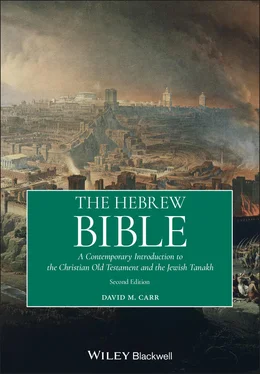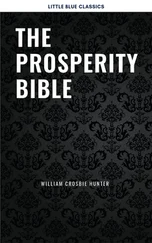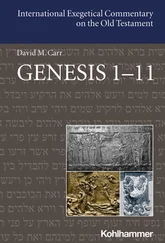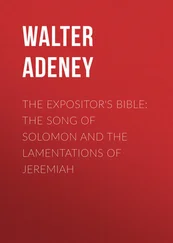1 ...7 8 9 11 12 13 ...16 In the end, there is no one contemporary translation that scholars agree is decisively best. Arguments can be made for a variety of the contemporary translations that are listed in Appendix 2 of this chapter. Also, if your work focuses on a particular passage, you can get a good sense of particular translation issues in it by comparing multiple up‐to‐date translations with each other. Some like to use online resources for this, such as Bible Study Tools ( www.biblestudytools.com\compare‐translations) or the Bible Gateway ( www.biblegateway.com). It should be noted, however, that these resources contain a number of out‐of‐date translations and neglect Jewish translations (e.g. the NJPS). If you use these sites, be sure to select up‐to‐date translations on the Christian comparison sites (e.g. NRSV, NIV) and compare those with the Jewish NJPS translation which can be purchased in book form or accessed online at www.sefaria.org. Alternatively, you can greatly benefit from using a Bible software tool (such as Accordance) and purchasing multiple recent Christian (e.g. NRSV, NJV) and Jewish (e.g. NJPS) translations for it that you then can compare with each other. Such comparison can reveal major differences between translations, and the more one finds such differences, the more one wonders how to decide between the alternatives. This is ideally solved by learning biblical languages! Many students, however, lack time and/or interest in going that far with biblical studies. For those lacking knowledge of biblical languages it is important to know where a given translation is only one possible rendering in English of a phrase in Hebrew, Aramaic, or Greek that could also be rendered, perhaps better, in another way. Comparison of Bible translations shows this.
Bible Abbreviations, Chapters, and Verses
When books and articles cite biblical passages by chapter and verse, they usually follow this order: abbreviation for the biblical book, followed by the chapter number, followed by the verse. An example is Isa 44:28 (chapter 44, verse 28). If more than one verse is cited, dashes and commas can be used: Isa 44:20, 28 or Isa 44:10–13, 28. When scholars want to refer to the bulk of a passage without detailing specific verses left out, they will add an asterisk to indicate that some verses are not meant to be included in the reference, e.g. Genesis 28*. Occasionally, you will also see scholars refer to half‐verses, e.g. 2:4a or 2:4b, following accent divisions found in their Hebrew Bibles. Such notations will be sparingly used in this book only to label citations that begin or end in a half‐verse.
Here are some standard abbreviations for biblical books shared by Jewish and Christian Bibles (given in the order followed by most Christian Bibles). Sometimes these are further shortened through just giving the first two letters (e.g. Ex instead of Exod) or removing a vowel (e.g. Jdg for Judges):
Gen = Genesis
Exod = Exodus
Lev = Leviticus
Num = Numbers
Deut = Deuteronomy
Josh = Joshua
Judg = Judges
Ruth = Ruth
Sam = Samuel
Kgs = Kings
Chr = Chronicles
Ezra = Ezra
Neh = Nehemiah
Esth = Esther
Job = Job
Ps or Pss (for plural) = Psalms
Prov = Proverbs
Eccl (or Qoh) = Ecclesiastes (Hebrew Qohelet)
Song (or Cant) = Song of Songs (Canticles)
Isa = Isaiah
Jer = Jeremiah
Lam = Lamentations
Ezek = Ezekiel
Dan = Daniel
Hos = Hosea
Joel = Joel
Amos = Amos
Ob = Obadiah
Jon = Jonah
Mic = Micah
Nah = Nahum
Hab = Habakkuk
Zeph = Zephaniah
Hag = Haggai
Zech = Zechariah
The Origins of Chapters and Verses
The earliest Hebrew and Greek manuscripts of the Bible lack any chapter or verse numberings (see Figure 0.2). The Hebrew Bible/Old Testament was divided into sections for reading in the synagogue, and the Greek New Testament was divided into sections as well, but there were no numbers in these early manuscripts.
Verse divisions were first added into the Hebrew Bible (without numbers) by the Masoretes, a group of Jewish scholars who worked in the seventh to tenth centuries ce and produced the standard edition of the Hebrew Bible now used in Judaism. The chapter divisions we now have were developed in 1205 by Stephen Langton, a professor in Paris and eventually an archbishop of the Church of England. He introduced them into his edition of the Latin Vulgate translation of the Bible, and these divisions were later adopted by Jewish scholars as they became popular means to refer to biblical passages.
The first Old Testament and New Testament Bible with numbered verses was produced in 1555 by a Parisian book seller, Robert Estienne (also known as Stephanus). He is reported to have divided a copy of his New Testament into the present 7,959 verses while riding on horseback from Paris to Lyon. He also numbered the chapters and verses of both the Old and New Testament. Now these verses are found in scholarly editions of the Hebrew Bible (see Figure 0.1) and in translations of the Bible.
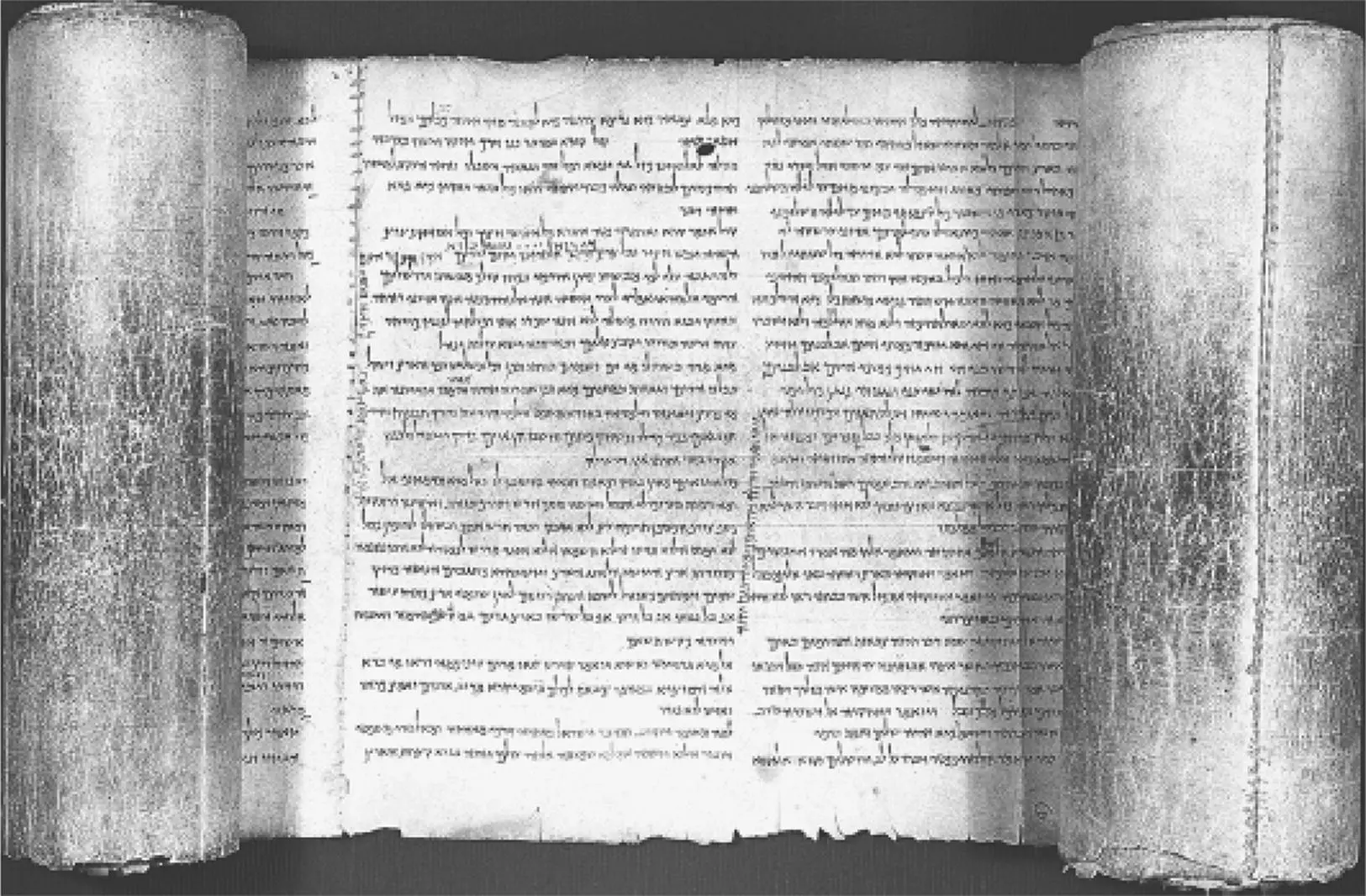
FIGURE 0.2 One of our earliest manuscripts of the book of Isaiah, dated to the early first century bce. Note how the letters are hung from lines on the parchment and a scribe has added a verse into the middle.
Conclusion on Critically Analyzing a Page of Your Own Bible
This chapter just starts to indicate how every page of your Bible, whether a Jewish Tanakh or a particular Christian Bible, is the product of an intense process of textual criticism, analysis of the original language of biblical passages, and packaging of the particular translation of such passages through elements like chapter and verse numbers. Ancient manuscripts often were divided into longer, unnumbered reading sections (for use in worship), and they sometimes included marginal comments or additional verses here or there (see Figure 0.2). Nevertheless, they did not have the numbering, headings, or the reader‐guides now in the Bible before you. Take note of every element on a given page of your contemporary Bible that helps frame the biblical text and present it to you. Your first step as a critical reader of the Bible is to become more conscious of these elements and more familiar with their characteristics.
CHAPTER REVIEW
For Review
1 Know the meaning and significance of the following terms discussed in this chapter:apocryphacanon and canonicalconjectural emendationdeuterocanonical booksdynamic equivalence translationformal correspondence translationHebrew BibleKing James VersionQur’anLXXmanuscript witnessMasoretic textMTOld TestamentPentateuchSeptuagintsupersessionismTanakhtextual criticismTorah
2 What are the main differences between the Christian Old Testament and the Jewish Tanakh?
3 How is the Muslim Qur’an related to the Jewish and Christian Bibles?
RESOURCES FOR FURTHER STUDY
Editions of translations
1 The first edition listed provides an overview of several translations; some good editions follow.
2 The New Jerusalem Bible. New York: Doubleday, 1985. This is the NJB.
3 The New Oxford Annotated Bible with Apocrypha (5th edition), eds. Michael Coogan et al. New York: Oxford University Press, 2018. This contains the NRSV.
4 The Jewish Study Bible, eds. A. Berlin et al. New York: Oxford University Press, 2004. This contains the NJPS.
5 The HarperCollins Study Bible (fully revised and updated), eds. Harold W. Attridge et al. San Francisco: HarperSanFrancisco, 2006. This contains the NRSV.
Читать дальше
